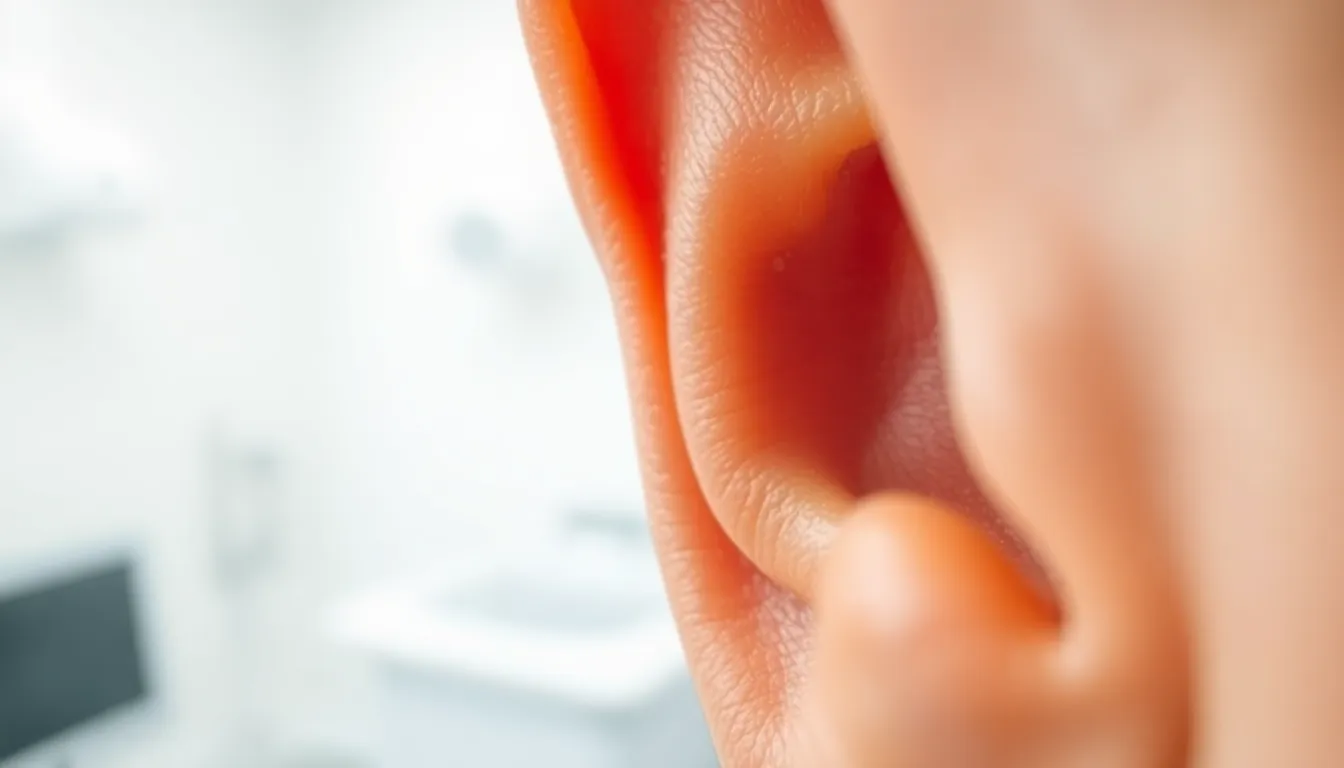Table of Contents
ToggleEarwax, often dismissed as a nuisance, plays a crucial role in ear health. This natural substance, scientifically known as cerumen, forms in the ear canal and serves as a protective barrier. It traps dust, debris, and microorganisms, preventing them from reaching the delicate structures of the inner ear.
Understanding how earwax forms can shed light on its importance and the body’s self-cleaning mechanisms. The process involves a combination of secretions from sebaceous and ceruminous glands, which work together to create this unique substance. As it accumulates, earwax gradually moves out of the ear canal, ensuring the ears remain clean and healthy.
Understanding Ear Wax
Ear wax, also known as cerumen, forms through a combination of secretions from sebaceous and ceruminous glands located in the ear canal. These glands produce oils and mucus that blend with skin cells, dust, and other debris. This mixture then hardens, creating the protective substance.
Composition of Ear Wax
- Lipids: Essential for moisture retention
- Sebum: Contributes to the waxy consistency
- Desquamated epithelial cells: Skin cells that shed and combine with wax
- Fungal and bacterial elements: Microorganisms that the wax traps to prevent infections
Function of Ear Wax
- Protection: Traps dirt and microorganisms
- Moisture regulation: Prevents dryness and itching
- Self-cleaning: Facilitates the movement of debris out of the ear canal
The natural process of ear wax formation and removal ensures that the ear remains healthy and free from blockage. Regular activities like chewing or even talking facilitate the movement of ear wax, helping it migrate to the outer ear where it can be easily removed.
The Role of Ear Wax

Earwax, or cerumen, plays a crucial role in ear health, providing both protection and lubrication to the ear canal.
Protection
Earwax acts as a protective barrier, effectively trapping dust, debris, and harmful microorganisms. It contains antimicrobial properties that help prevent infections. This layer of protection reduces the risk of bacterial and fungal growth, preserving the integrity of the inner ear. By keeping harmful elements at bay, earwax contributes significantly to overall ear health.
Lubrication
Earwax provides essential lubrication in the ear canal. This moisture maintains the epithelial lining, preventing dryness and irritation. When earwax retains moisture, it also reduces the likelihood of itching and discomfort. Furthermore, adequate lubrication supports the natural migration of debris toward the outer ear, facilitating the self-cleaning process crucial for maintaining ear hygiene.
How Does Ear Wax Form
Earwax, or cerumen, forms through a combination of glandular secretions, skin shedding, and environmental factors. Each aspect contributes to the unique composition and function of earwax in maintaining ear health.
Glandular Secretion
Glandular secretion plays a vital role in earwax formation. Sebaceous glands produce sebum, an oily substance, while ceruminous glands secrete a waxy component. This combination helps create a sticky substance that traps dirt, dust, and microorganisms. As these secretions mix with dead skin cells, they form earwax, which provides protection for the ear canal.
Skin Shedding
Skin shedding significantly contributes to earwax formation. The skin within the ear canal constantly undergoes a natural renewal process, where older cells slough off. These desquamated epithelial cells mix with glandular secretions, enhancing the texture and effectiveness of earwax. This process not only aids in earwax production but also ensures continuous self-cleaning by promoting the removal of debris and contaminants from the ear canal.
Environmental Factors
Environmental factors affect earwax formation and composition. Exposure to dust, pollutants, and allergens can increase earwax production as the body attempts to protect itself from harmful agents. Additionally, humidity and temperature levels may influence the consistency of earwax. For instance, high humidity can lead to softer earwax, while dry conditions may result in harder, drier earwax. These adaptations help maintain optimal ear health by responding to varying environmental conditions.
Types of Ear Wax
Earwax exists in two primary forms: wet and dry. Each type has distinct characteristics and implications for ear health.
Wet Ear Wax
Wet earwax appears moist and sticky, with a yellow to dark brown color. It’s primarily composed of lipids and secretions from sebaceous glands. This type of earwax tends to be more prevalent in individuals of African and Caucasian descent. Wet earwax serves as an effective barrier against dirt and pathogens, trapping debris before it can enter the inner ear. Its consistency helps maintain a moist ear canal, preventing dryness and irritation.
Dry Ear Wax
Dry earwax, in contrast, has a flaky texture and light to dark brown hue. It consists of desquamated skin cells and lower lipid content compared to wet earwax. This type is more common among individuals of East Asian descent. Dry earwax may not provide the same level of protection, but it still plays a role in self-cleaning by allowing easier movement out of the ear canal. dryness can occur in individuals with this type, leading to potential irritation.
The composition and consistency of earwax can vary significantly based on genetic and environmental factors, influencing ear health and hygiene practices.
Understanding how earwax forms is essential for appreciating its role in ear health. This natural substance not only protects the ear canal but also aids in self-cleaning and moisture regulation. By recognizing the factors that influence earwax production individuals can better maintain their ear hygiene.
It’s important to remember that while earwax serves vital functions it’s best to avoid excessive cleaning that can disrupt the ear’s natural balance. Embracing the body’s self-cleaning mechanisms ensures that the ears remain healthy and free from irritation. Proper awareness and care can lead to optimal ear health and prevent potential issues down the line.






